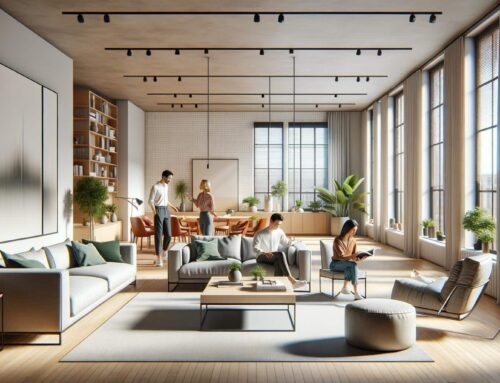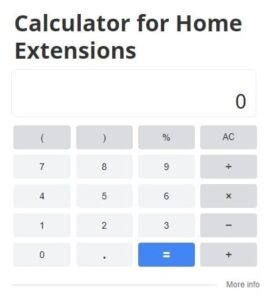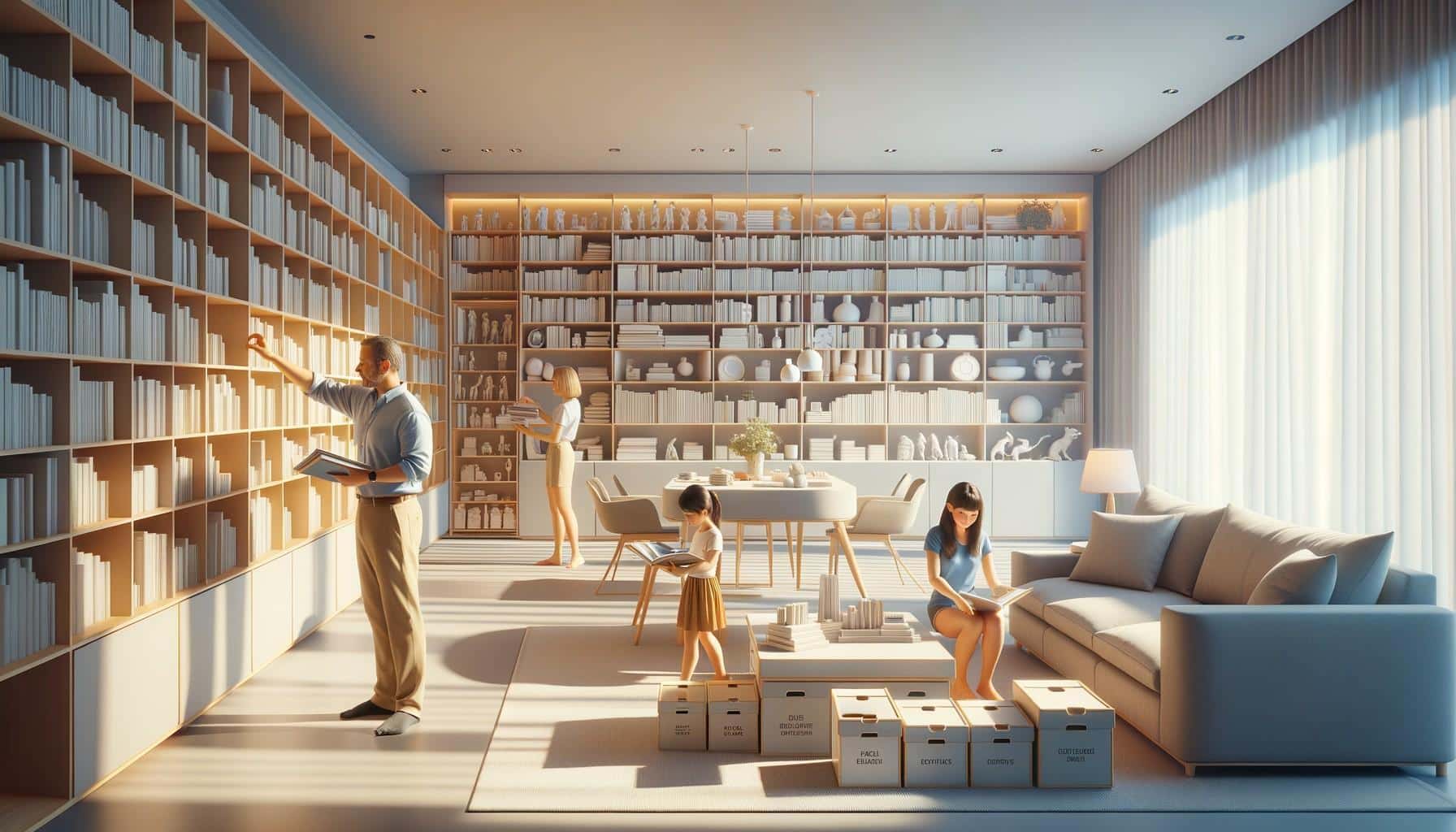
Clutter transforms peaceful homes into sources of daily stress and frustration. Research from UCLA shows that people living in cluttered spaces have higher cortisol levels throughout the day.
We at Home Owners Association believe that effective tips on how to declutter your home can completely change how you feel in your space. The right approach makes decluttering manageable rather than overwhelming.
Why Decluttering Pays Off
Mental Health Improves Immediately
The National Institute of Mental Health confirms that cluttered environments directly increase anxiety levels and stress hormones. Princeton University neuroscience research reveals that physical clutter competes for your attention, decreases performance, and increases cortisol levels. When you remove excess items from your space, your brain processes information more efficiently and your sleep quality improves within the first week.
UCLA studies that tracked families over eight years found that people who described their homes as organised reported 40% less fatigue and significantly better mood stability compared to those who lived with clutter. Your mind operates more clearly when visual distractions disappear from your environment.
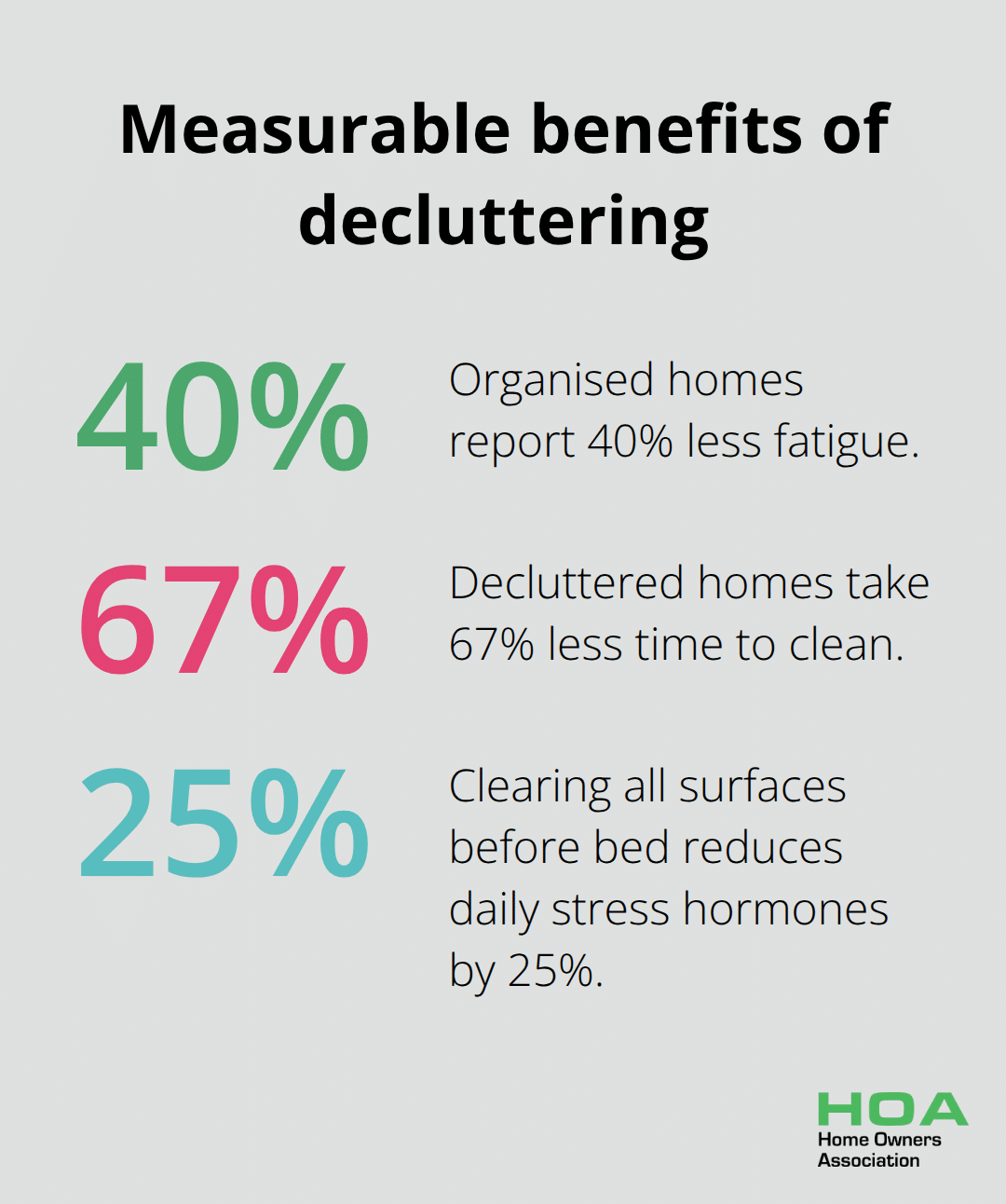
Financial Benefits Add Up Fast
Storage costs vary significantly across major Australian cities, with Sydney averaging $140-$550 monthly, Melbourne $170-$600, and Brisbane $185-$400 (money that vanishes when you declutter effectively). The average household spends $2,400 annually to maintain and organise items they rarely use, according to recent consumer spending data. Decluttered homes require 67% less time to clean, which reduces housekeeping expenses and frees up hours for productive activities.
Real estate agents report that organised homes sell 38% faster and for prices 6-12% higher than comparable cluttered properties. Insurance companies also offer lower premiums for well-maintained homes, as organised spaces reduce fire hazards and damage risks.
Long-Term Savings Multiply
Professional organiser Holly Blakey notes that most families save $1,800 yearly after they complete a thorough process, primarily through reduced purchases of duplicate items and improved maintenance efficiency. You stop buying items you already own but cannot find (the average person owns three phone chargers and two can openers without realising it).
These financial benefits create momentum that makes the next phase of your home transformation even more rewarding. The systematic approach to different areas of your home builds on these initial wins.
Which Rooms Should You Declutter First
Smart sequences determine success rates according to professional organiser Mimi Bogelund, who tracked 200 client projects over three years. Living rooms and kitchens generate immediate visual impact that motivates continued effort, while bedrooms or basements often lead to abandonment within two weeks. Systematic room progression prevents the overwhelm that stops attempts.
Target High-Traffic Spaces for Maximum Impact
Kitchen benchtops that follow the 5/7 rule create instant transformation – keep only items used five days out of seven visible, store everything else in designated cabinets or drawers. Coffee makers and frequently used appliances earn bench space, while specialty gadgets move to storage. Living room surfaces cleared completely each evening reduce mental clutter and cortisol levels within the first week (according to UCLA research). Focus on coffee tables, side tables, and entertainment centres first since these areas accumulate the most daily clutter.
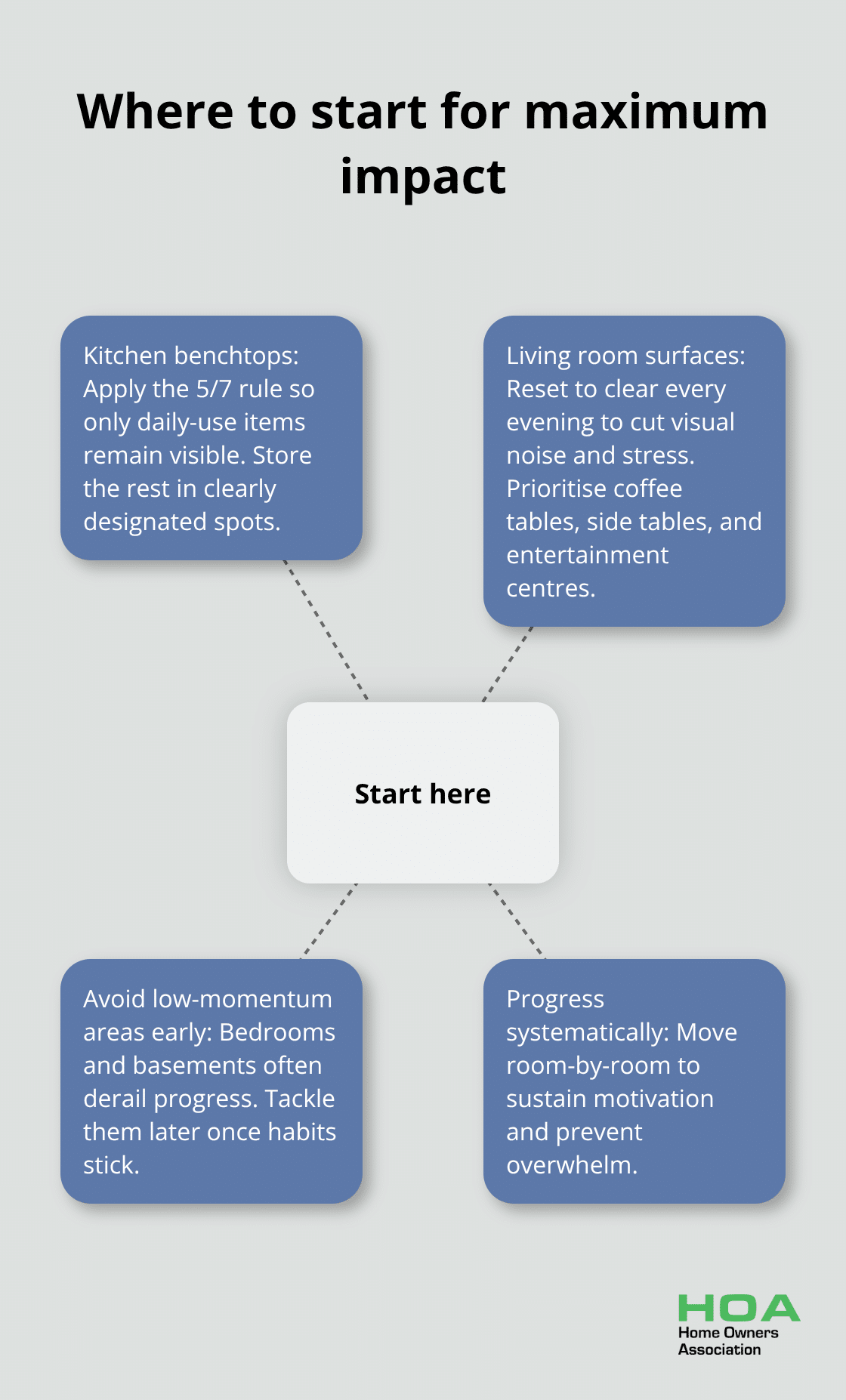
Storage Areas Require Systematic Approaches
Wardrobes respond best to the four-box method with containers labelled keep, donate, sell, and discard. The file fold technique saves two-thirds of drawer space while it improves visibility of options. Professional organiser Holly Blakey recommends you tackle one wardrobe completely before you move to the next, as partial completion in multiple areas creates more chaos. Basements and attics should wait until you master smaller spaces (these areas contain the most decision fatigue triggers). Start with least used spaces like guest rooms or storage wardrobes to build momentum.
Sentimental Items Need Special Timing
Personal photographs, family heirlooms, and memory-laden objects require emotional energy that depletes quickly. Schedule these areas for separate days when you feel mentally fresh and can reflect thoughtfully on each item’s true value. The KonMari method places sentimental items last in the sequence because practice with easier categories builds confidence. Address these spaces only after you establish successful habits with practical items, typically after you complete three to four other rooms. Remove personal items systematically to create neutral environments that feel more spacious.
The systematic approach to room selection sets the foundation for the specific methods that make each session productive and sustainable.
What Methods Make Decluttering Actually Work
The four-box system transforms overwhelming spaces into manageable decisions within minutes. Professional organisers recommend using labelled containers for efficient sorting. Label four boxes clearly: keep, donate, sell, and discard. Pick up each item once and place it immediately into the appropriate box without second-guessing your initial reaction.
The physical act of handling each object forces concrete decisions and prevents the endless mental cycling that stalls progress. Research from Princeton University confirms that decision fatigue increases dramatically when people hold items repeatedly without committing to action.
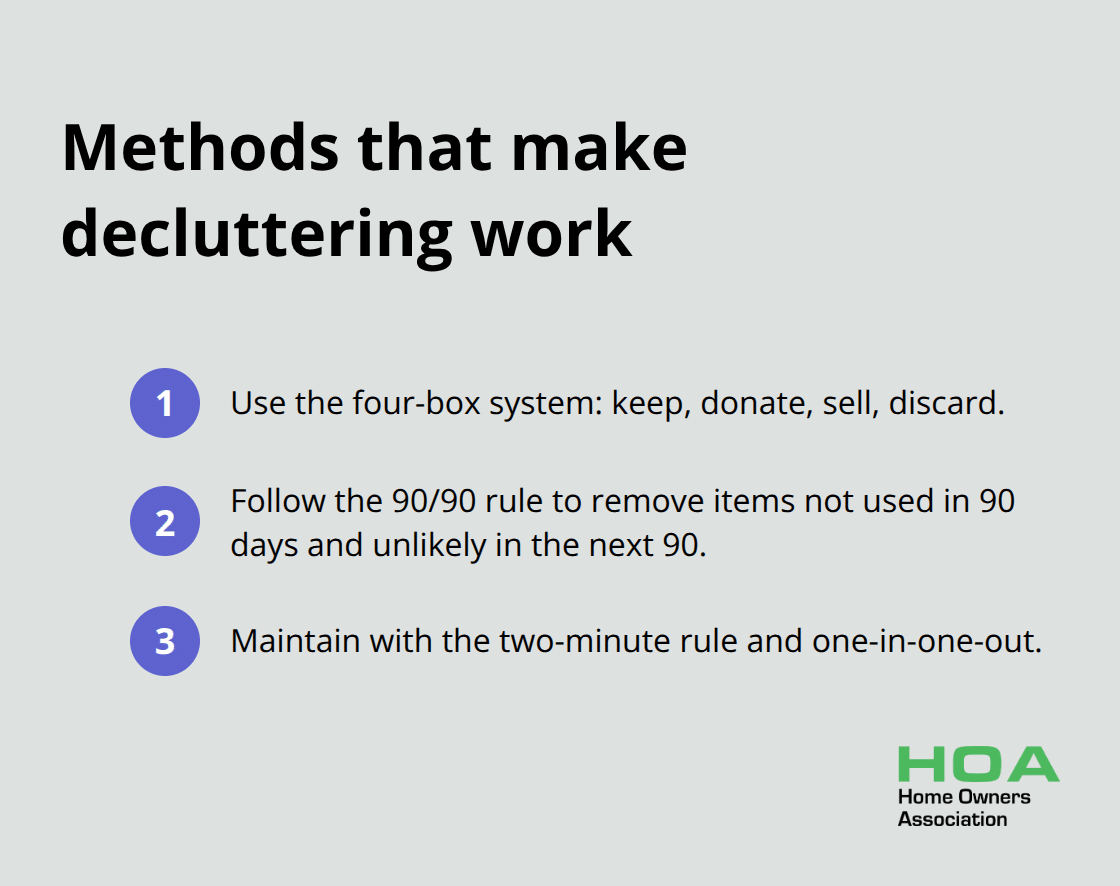
The 90-Day Rule Beats One-Year Guidelines
The Minimalists developed the 90/90 rule after they tested various timeframes with over 1,000 participants. Remove items not used in the past 90 days and unlikely to be used in the next 90 days. This shorter window captures seasonal variations while it eliminates the hoarding mentality that one-year rules enable.
Holly Blakey reports that clients who follow 90-day parameters remove 40% more items than those who use annual assessments. Kitchen gadgets, clothing, and books respond particularly well to this timeframe since genuine usage patterns emerge clearly within three months.
Daily Habits Prevent Future Accumulation
The two-minute rule maintains decluttered spaces with minimal effort (according to productivity researcher David Allen). Complete any organising task that takes under two minutes immediately rather than postponing it. Put dishes in the dishwasher, file papers, and return items to designated locations the moment you finish using them.
UCLA studies show that people who clean your home and clear all surfaces before bed reduce daily stress hormones by 25% compared to those who leave items scattered. Implement the one-in-one-out principle rigorously – remove one existing item for every new purchase that enters your home. This mathematical approach prevents accumulation without requiring complex decision-making systems (which often fail under pressure).
Final Thoughts
These tips on how to declutter your home create lasting transformation when you apply them systematically. The four-box method, 90-day rule, and daily maintenance habits work together to prevent overwhelming accumulation while they maintain organised spaces. UCLA research confirms that people who implement these strategies experience 40% less daily fatigue and significantly improved mental clarity within weeks.
Success depends on starting with high-impact areas like kitchens and living rooms, then progressing to storage spaces before you tackle sentimental items. The two-minute rule prevents future clutter buildup while the one-in-one-out principle maintains balance automatically. Professional organiser Holly Blakey reports that families save $1,800 annually after completing thorough decluttering projects (through reduced duplicate purchases and improved maintenance efficiency).
Your organised home becomes a foundation for better financial decisions and reduced stress levels. We at Home Owners Association support Melbourne homeowners with expert guidance on maintaining beautiful, functional spaces. The investment in decluttering pays dividends through improved property values, lower maintenance costs, and the peace that comes from living in an intentionally organised environment.


